FS Colour Series: CORONET BLUE Inspired by Oskar Kokoschka’s Dreamy Expressionism
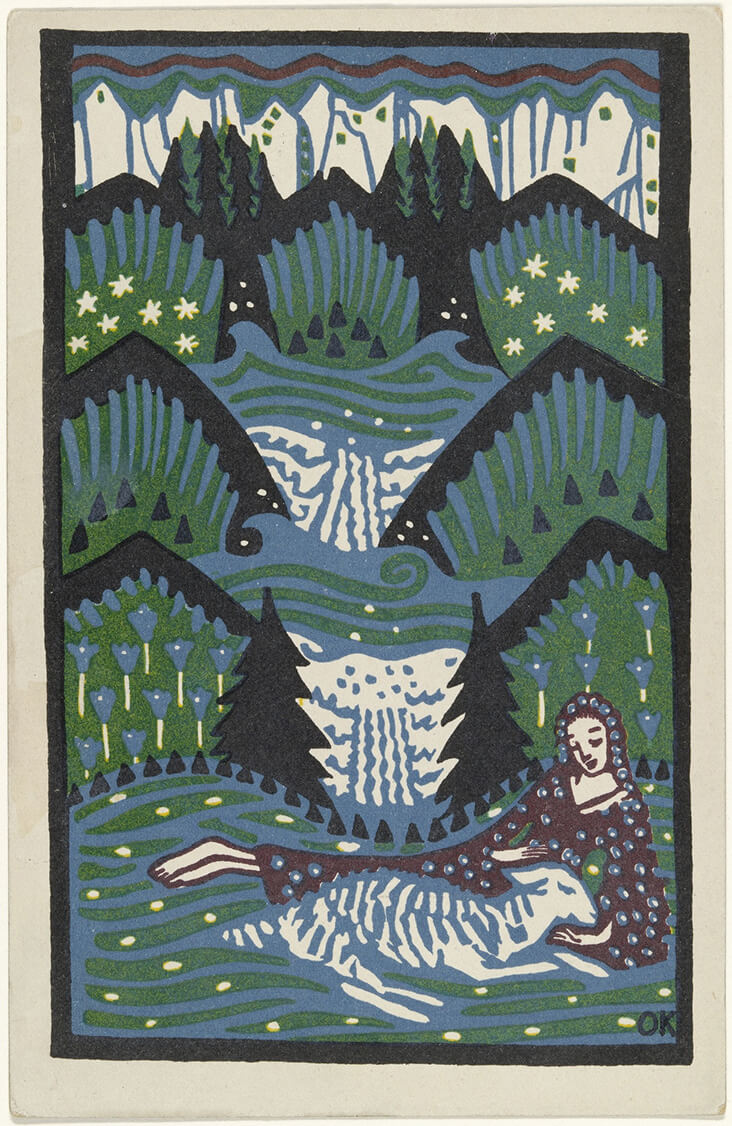
Girl with a Sheep in the Mountain Meadow (Mädchen mit Schaf auf Bergwiese), 1907, courtesy of the Museum of Modern Art, New York
Austrian artist and writer Oskar Kokoschka made a remarkable contribution to early 20th century culture, spearheading a series of daring and inventive new visual languages. In his early career, he was a pioneering decorative artist, illustrating fantastical stories with a flat, Oriental style, while his mature art was swirling with wild, expressionistic energy. Throughout these phases of his career, Kokoschka brought CORONET BLUE’s dreamy shade of lilac blue into his otherworldly scenes, colouring anything from clothes to rippling water and wide-open stretches of yawning sky. Ultimately for him it was the colour of escape, an embodiment of the places he could disappear into while getting lost in the process of making art.
Kokoschka was born in 1886 in the town of Pöchlarn, Austria. When he was just three years old his family relocated to Vienna, where he remained for the rest of his childhood. He showed artistic promise from an early age and at the age of 18, he earned a scholarship to study at the School of Arts and Crafts in Vienna. While still a student Kokoschka began taking on various illustration commissions and in these early works Kokoschka found room to stretch his imagination, creating dreamy, mystical places filled with undercurrents of poetry and symbolism. The lithographic print Girl with a Sheep in the Mountain Meadow (Mädchen mit Schaf auf Bergwiese), 1907 demonstrates how the artist could convey quiet places of wonder with limited colours and striking contours. Heather blue runs across the image’s background, rippling in waves like gently undulating water.
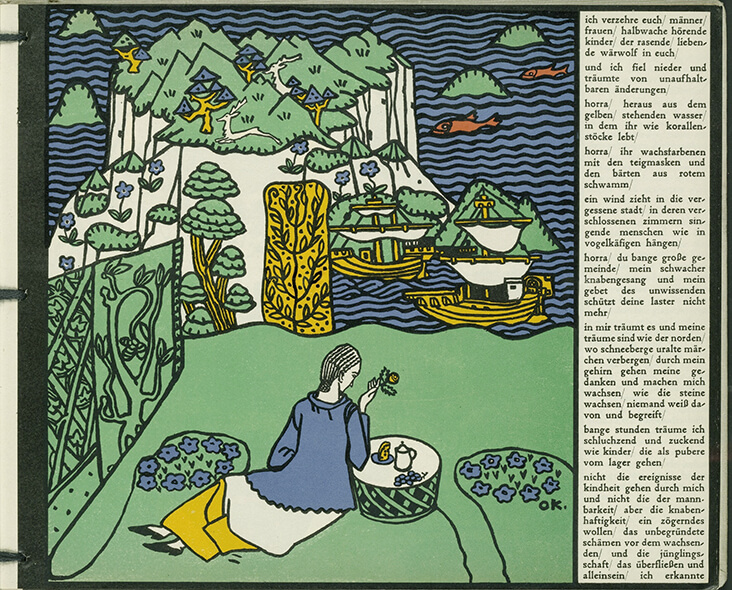
The Distant Island (Die ferne Insel), (in-text plate, folio 6) from Die träumenden Knaben (The Dreaming Boys), 1917, courtesy of the Museum of Modern Art
The later photolithographic print The Distant Island, 1917, was made as part of Die träumenden Knaben (The Dreaming Boys), a book written and illustrated by Kokoschka as a commission from Fritz Waerndorfer, a prominent arts patron in Vienna. Kokoschka was supposed to write and illustrate a children’s fairy-tale, but instead, he created a haunting tale of awakening sexuality on a remote island, demonstrating his increasing desire to lean into subversive styles of avant-garde experimentation. Even if his client was less than pleased, the book is now revered in the history of art, making it a risk worth taking. In this image, a young girl is sprawled across a pale green lawn, carelessly looking out to sea while the hazy blue of her dress mimes the beckoning blue water beyond.
In the years that followed Kokoschka was increasingly drawn into Austrian artistic circles, and he moved towards painting portraits and landscapes with a free, expressive style. Although his subjects were based on the real world, Kokoschka felt a strong desire to express the turbulent emotions he felt inside in response to his subjects, and his way of doing this was with free brushstrokes and intense colour. In the wide-open scene Istanbul I, 1930, Kokoschka looks down on the city’s harbour from above, allowing him to take in the breath-taking scene as it unfurls outwards before him. Vivid blue sky is awash with his trademark heather blue, a colour reflected like a mirror in the sparklingly bright water below.
By the time he painted Polperro II, 1939, Kokoschka had emigrated to the UK from Austria to escape the dangers of rising fascism. He settled in a house in Cornwall which looked out to sea, and this painting was made while looking out of the window to the view beyond. Angry scrawls of paint suggest the rugged turbulence of the English coastline, while the entire scene is shot through with streaks of lilac blue that lift it beyond the real world into an imaginary realm, demonstrating, perhaps, the artist’s desire to break free from the tyranny of war. The Crab, 1939-40 was also made in Kokoschka’s Cornish home, and again the image combines references to real place with the political turmoil and unease of the time in which he was living. Flashes and streaks of heather blue are rays of hope, offering the dream of freedom and escape that the artist so desperately longed for.





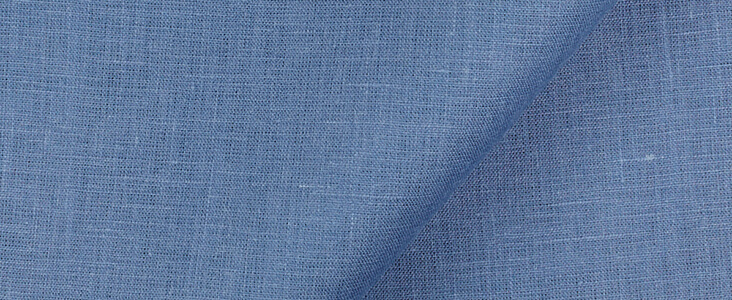
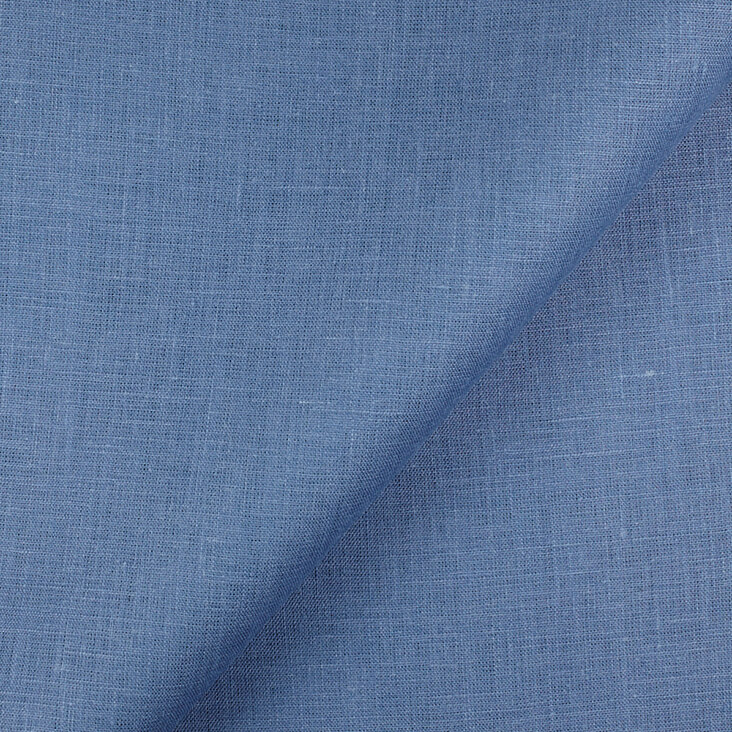
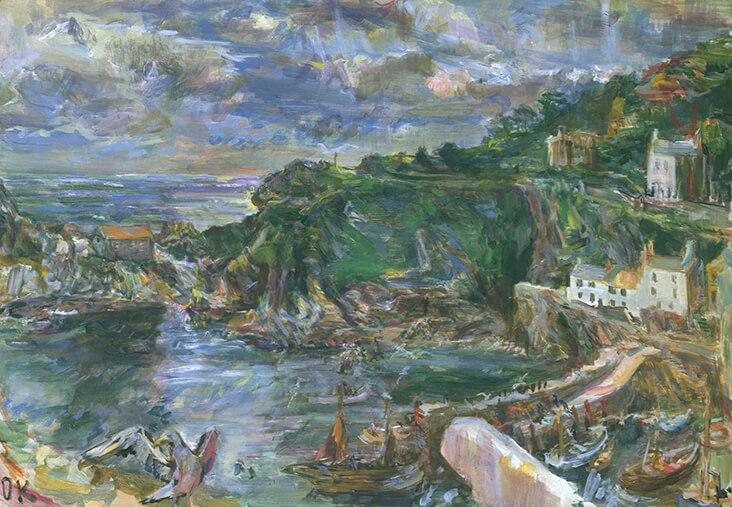
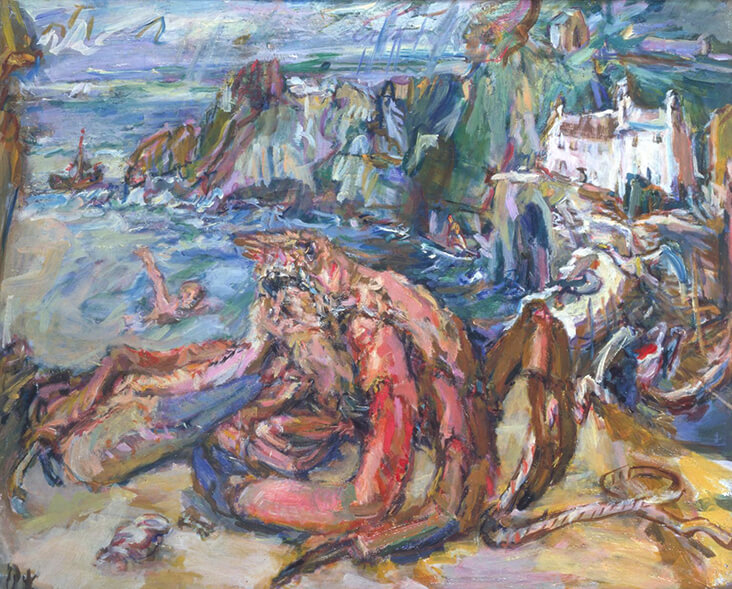









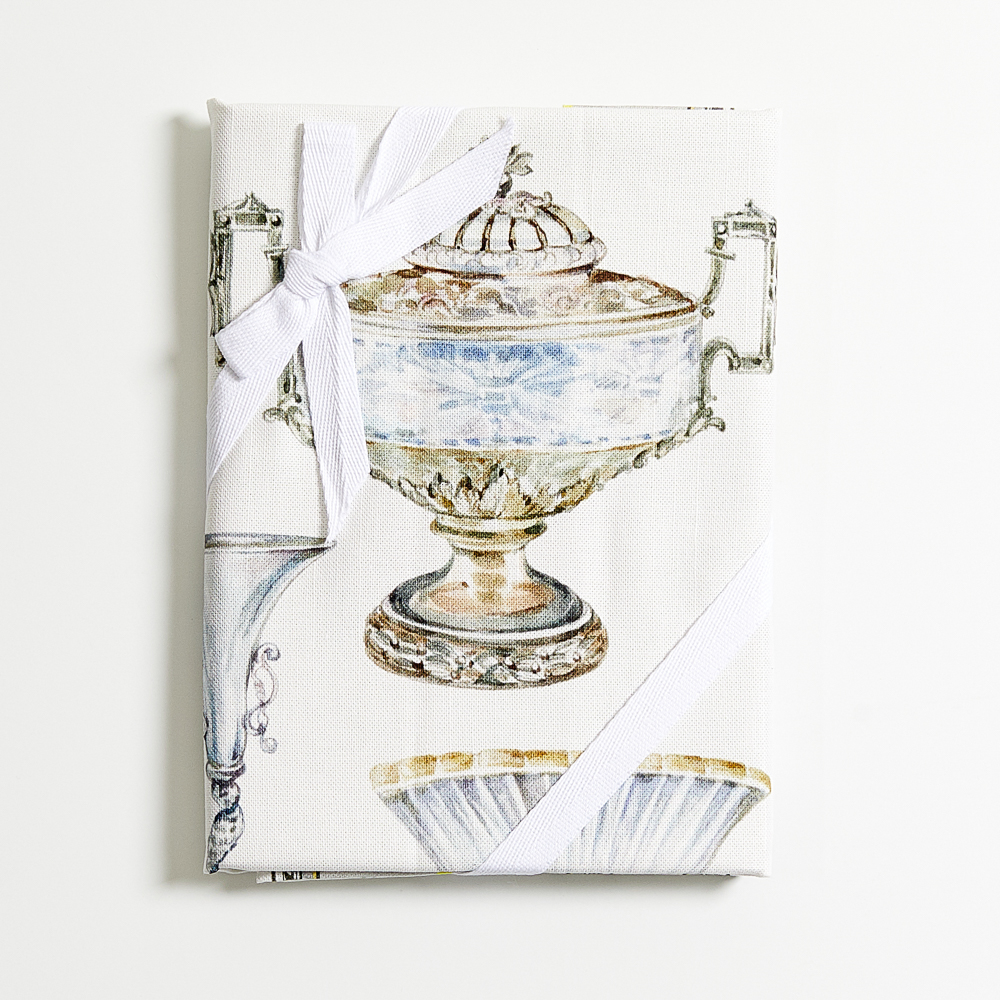















































2 Comments
Vicki Lang
What wonderful work and the blue background makes the other colors pop against it.
Rosie Lesso
He was such a great painter – so expressive and such vivid colours…